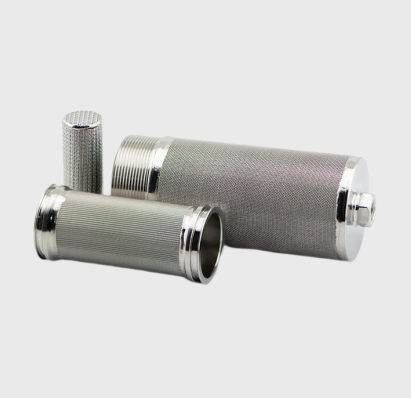Saifilter candle filters are an essential component in many industrial processes, providing efficient filtration and separation of solids from liquids.
To ensure optimal performance and longevity of these filters, proper maintenance is crucial.
This article will provide valuable tips and guidelines for maintaining Saifilter candle filters, maximizing their performance and extending their lifespan.
Regular Cleaning
Regular cleaning is essential to prevent the accumulation of debris and contaminants on the filter surface.
This can be done by backwashing the filter with clean water or using a suitable cleaning solution.
It is important to follow the manufacturer's instructions and recommendations for the cleaning process.
How to Backwash Saifilter Candle Filters
To backwash Saifilter candle filters, follow these steps:
- Close the inlet and outlet valves to isolate the filter.
- Open the drain valve to release any trapped liquid.
- Slowly open the backwash valve to allow clean water to flow through the filter in the reverse direction.
- Continue backwashing until the water runs clear.
- Close the backwash valve and open the drain valve to remove any remaining water.
Using a Cleaning Solution
If backwashing alone is not sufficient to remove stubborn deposits, a cleaning solution specifically designed for Saifilter candle filters can be used.
Follow the manufacturer's instructions for the appropriate concentration and contact time.
Rinse the filter thoroughly after cleaning to remove any residual cleaning solution.
Inspecting and Replacing Filter Elements
Regular inspection of the filter elements is essential to identify any signs of damage or wear.
Over time, the filter media may become clogged or damaged, reducing filtration efficiency.
It is recommended to inspect the filter elements at regular intervals and replace them as necessary.
Signs of Filter Element Damage
Common signs of filter element damage include:
- Tears or holes in the filter media
- Excessive clogging or fouling
- Reduced flow rate
- Increased pressure drop
- Poor quality filtrate
Replacing Filter Elements
When replacing filter elements, follow these steps:
- Close the inlet and outlet valves to isolate the filter.
- Remove the filter housing cover or lid.
- Carefully remove the old filter elements, taking note of their orientation.
- Inspect the filter housing for any signs of damage or wear.
- Install the new filter elements, ensuring they are properly aligned and seated.
- Replace the filter housing cover or lid.
- Open the inlet and outlet valves to resume filtration.
Optimizing Operating Conditions
Proper operating conditions are crucial for maximizing the performance of Saifilter candle filters.
This includes maintaining the correct flow rate, pressure, and temperature within the specified limits.
Deviating from these parameters can lead to reduced filtration efficiency and potential damage to the filter elements.
Flow Rate
Ensure that the flow rate through the filter is within the recommended range specified by the manufacturer.
Operating at excessively high or low flow rates can result in poor filtration and increased pressure drop.
If necessary, install flow control devices to regulate the flow rate.
Pressure
Monitor the pressure differential across the filter and ensure it remains within the specified limits.
Excessive pressure drop indicates a clogged or fouled filter and may require cleaning or replacement of the filter elements.
Install pressure gauges to easily monitor the pressure differential.
Temperature
Operating the filter within the recommended temperature range is essential to prevent damage to the filter elements.
High temperatures can cause the filter media to degrade or melt, while low temperatures can lead to freezing and blockage.
Install temperature sensors to monitor and control the operating temperature.
Preventing Contamination
Preventing contamination of the filter system is crucial for maintaining optimal performance.
Contaminants such as solid particles, oils, and chemicals can accumulate on the filter surface, reducing filtration efficiency and potentially causing damage to the filter elements.
Pre-Filtration
Implementing a pre-filtration system can help remove larger particles and debris before they reach the Saifilter candle filters.
This can be achieved through the use of settling tanks, bag filters, or other suitable pre-filters.
Regularly clean and maintain the pre-filtration system to prevent clogging and ensure its effectiveness.
Chemical Compatibility
Ensure that the process fluids and chemicals are compatible with the filter materials.
Exposure to incompatible chemicals can cause degradation or swelling of the filter elements, leading to reduced performance and potential failure.
Consult the manufacturer's chemical compatibility guide for guidance.
Proper Handling and Storage
Handle the filter elements with care to avoid damage or contamination.
Store them in a clean and dry environment, away from direct sunlight and extreme temperatures.
Use protective covers or packaging to prevent dust, dirt, or moisture from entering the filter elements.
Conclusion
By following these maintenance tips, Saifilter candle filters can deliver optimal performance and longevity.
Regular cleaning, inspection, and replacement of filter elements, along with optimizing operating conditions and preventing contamination, are key to maximizing the efficiency and lifespan of these essential filtration components.
Implementing a proactive maintenance routine will ensure the continued success of industrial processes relying on Saifilter candle filters.
